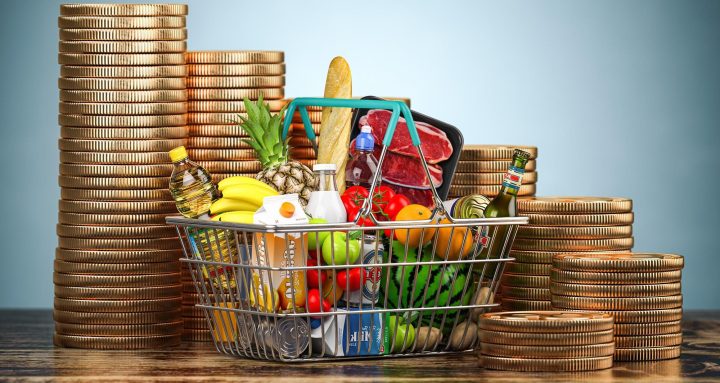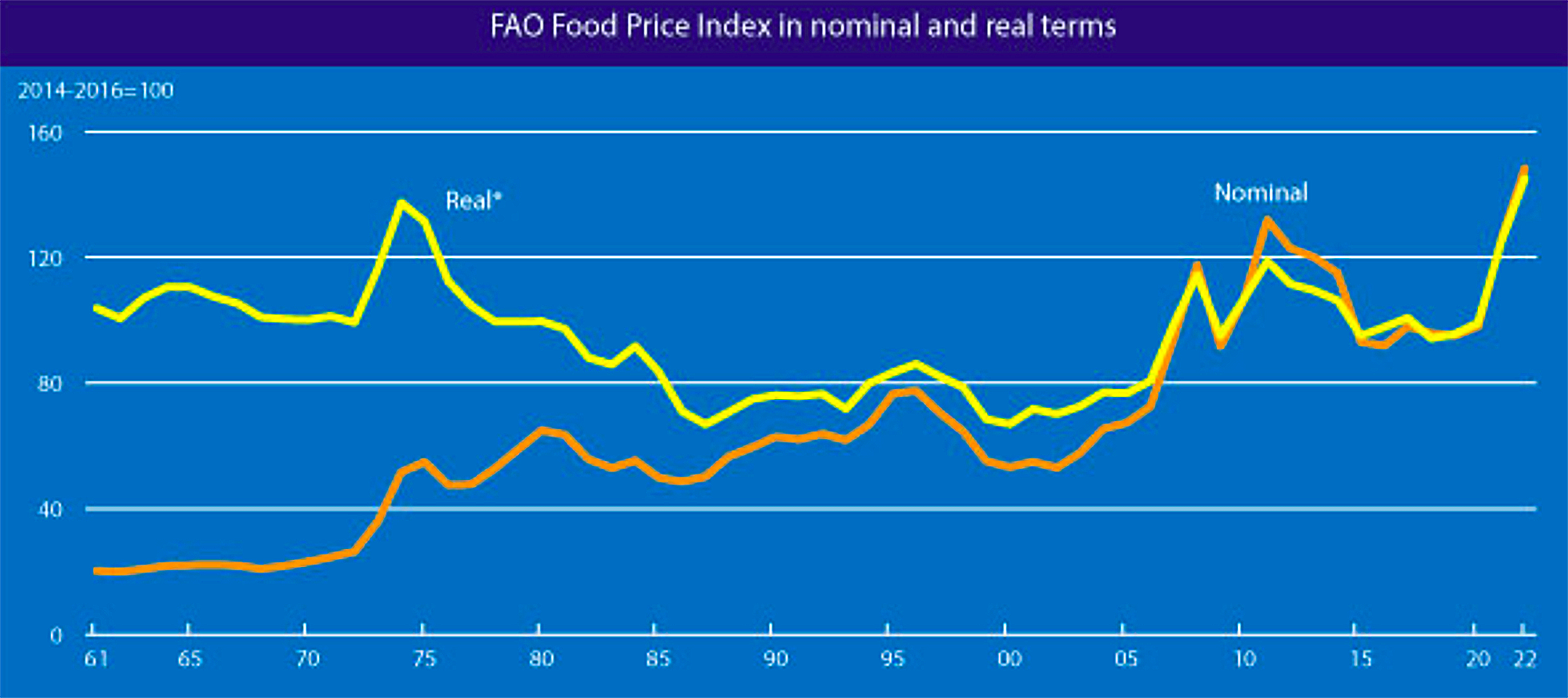INFLATION OUTLOOK
FAO Food Price Index falls again, but global prices remain elevated

The UN Food and Agriculture Organisation’s Food Price Index fell for the fifth month on the trot in August. This is the latest indication that food inflation is slowing, but prices remain elevated.
The UN Food and Agriculture Organisation’s (FAO’s) Food Price Index (FPI) measures a basket composed of the most globally traded edible commodities– broadly, cereals, oils, vegetables, meat and sugar. It scaled a record high in March of 159.3 points in the immediate wake of Russia’s invasion of Ukraine, driven higher by the fact that both countries are major grain producers.
It has been thankfully falling since and, in August, the FAO said the FPI fell for the fifth month on the trot, easing to an average of 138 points in the month, down 2.7 points or 1.9% from July.
FAO Food Price Index | World Food Situation
This does not necessarily mean that food prices in general are falling. Food inflation is slowing but is hardly deflationary, and prices remain elevated.
“Despite the latest drop, the index remained 10.1 points (7.9%) above its value a year ago,” the FAO said.
Visit Daily Maverick’s home page for more news, analysis and investigations
Among the subindices, the Cereal Price Index – which is crucial as it monitors price movements of the grains providing the bulk of the calories that Homo sapiens run on – averaged 145.2 points in August, down 2.0 points or 1.4% lower from July. But compared with August last year, it was still 11.4% higher.
“In August, international wheat prices fell by 5.1%, marking the third consecutive monthly decline, driven by improved production prospects, especially in Canada, the United States of America and the Russian Federation, and higher seasonal availability as harvests continued in the northern hemisphere as well as the resumption of exports from the Black Sea ports in Ukraine for the first time in over five months of interruption,” the FAO said.
Russia’s invasion of Ukraine was the key reason for the price surge earlier this year, and so the resumption of Ukrainian grain exports under a UN-brokered deal have helped to cool prices.
The Kremlin looms large in this unfolding drama, and if you are paying more for your pap or slap chips, you know who to blame.
In South Africa, food inflation has not yet shown any signs of slowing and was running at 10% in July, when the wider Consumer Price Index raced to a new 13-year high of 7.8%.
Read more in Daily Maverick: “Stagflation – SA consumer inflation accelerates to new 13-year high of 7.8% in July”
Globally and at home, rising food prices hurt the poor the hardest, chowing into limited household incomes. This can fuel wage demands, which in turn can stoke inflation. And the spectre of hunger is a potential trigger for social unrest and political populism.
So, hopefully, the FPI will maintain its downward trajectory, but the outlook remains uncertain. DM/BM

















 Become an Insider
Become an Insider
Comments - Please login in order to comment.